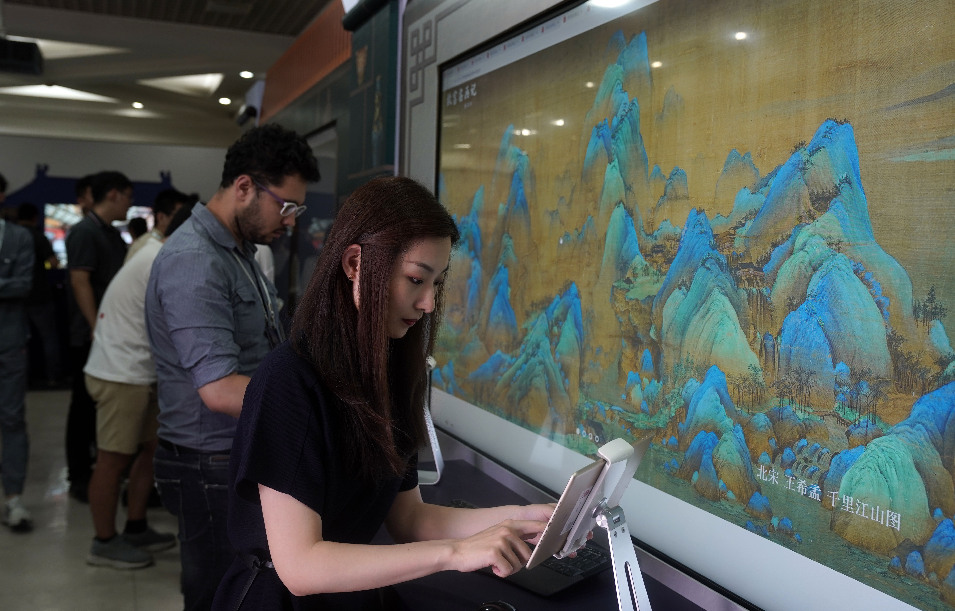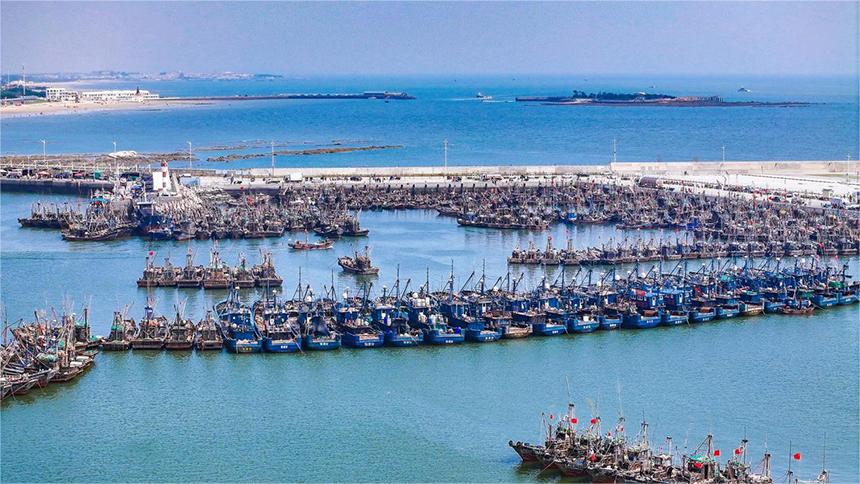Remarkable progress made in building a digital China
Online shopping for clothes, entering a virtual fitting room to try on outfits with just one click, intuitively feeling if the outfit matches; going to a popular restaurant, taking a number and ordering online in advance, saving time and effort; living at home, smart furniture and appliances that can be remotely controlled or voice-activated greatly enhance comfort; stepping out and opening navigation software, route planning and arrival times are clear at a glance...
The widespread application of digital technologies is influencing daily life, from clothing and food to housing and transportation, allowing more and more people to enjoy the benefits of digitalization. Not only that, but data, as a new type of production factor, has been rapidly integrated into all aspects of production, distribution, circulation, consumption, and social service management, profoundly changing production methods, lifestyles, and social governance.

A correspondent views a 3D display product at the Smart China Expo 2021 in Chongqing, southwest China. (Xinhua/Wang Quanchao)
The widespread application of digital technologies is directly connected to the tremendous progress that has been made in building a digital China. The country has accelerated steps to carry out reform related to the market-oriented allocation of data elements, and its digital economy has continuously expanded, according to the Digital China Development Report (2023) recently issued by the National Data Administration (NDA).
The expanding importance of data has been at the forefront of China's digital transformation.
By the end of 2023, more than 20 provinces had established specialized data trading institutions, with Guangdong, Shandong, Jiangsu, and Zhejiang provinces ranking among the highest in terms of the number of data trading institutions in China.
China has seen a sea change in the scale and scope of data sharing since last year, said Hu Jianbo, vice president of the China Academy of Information and Communications Technology.
China's total data output reached 32.85 zettabytes (ZB) in 2023, up 22.44 percent year-on-year. By the end of last year, the country's data storage volume hit 1.73 ZB.
This year, the NDA will continue to roll out institutional documents focusing on data property rights, data circulation, revenue distribution, security governance, public data development and utilization, enterprise data development and utilization, high-quality development of the digital economy, and data infrastructure construction, said Liu Liehong, head of the NDA.
This will transform China's vast data resources into a new competitive advantage to promote high-quality development and contribute to advancing Chinese modernization, Liu added.
The value-added output of core industries in the digital economy in 2023 is expected to exceed 12 trillion yuan ($1.684 trillion), making up about 10 percent of China's GDP.
The digital transformation of the manufacturing sector has also been further promoted.
Last year, the numerical control rate of key processes and the penetration rate of R&D and design tools for digital transformation in major industrial enterprises reached 62.2 percent and 79.6 percent, up by 12.1 and 9.4 percentage points from 2019, respectively.
In 2023, China was home to 62 "lighthouse factories", accounting for 40 percent of the global total of such factories selected by the World Economic Forum as representing the highest level of global intelligent manufacturing.
China has maintained its position as the world's largest online retail market for 11 consecutive years. Last year, the county's e-commerce transaction volume approached 46.83 trillion yuan, up 9.4 percent from the previous year, and its online retail sales hit 15.42 trillion yuan.
"Thanks to the continuous improvement of digital infrastructure and basic systems for data, China's digital economy has made great strides in both technological and model innovation, and the platform economy has played an increasingly important role," said Ouyang Rihui, assistant dean of the Chinese Internet Economy Research Institute at the Central University of Finance and Economics in Beijing.
He added that the country has further pushed forward the digital transformation of various industries, and the scale of its digital economy has seen steady growth.

Visitors experience digital Palace Museum at the Palace Museum in Beijing, capital of China. (Photo/Xinhua)
Digitalization is also improving how people connect with the government, public services, and cultural content.
China has maintained a leading position in the world in the realm of digital governance. Over 90 percent of government services are now available online, and online and one-stop services are provided for over 92.5 percent of the items requiring provincial administrative licensing.
The supply of digital cultural content is expanding and improving in quality. By the end of 2023, among the 1.86 million pieces of cultural relics preserved by the Palace Museum, 900,000 pieces had undergone digital collection, accounting for approximately 48 percent. The National Museum has achieved similar levels, with approximately 49 percent of cultural relics undergoing digital collection.
Digital education is developing equitably. As of Oct. 2023, schools at all levels and types achieved full internet coverage, with more than three-quarters of schools achieving wireless network coverage. By the end of 2023, the National Smart Education Platform had gathered 88,000 resources for primary and secondary schools, a year-on-year increase of 100 percent. 10,000 high quality courses for vocational education were also uploaded, a nearly tenfold increase year-on-year.
The building of a digital China and the accelerated development of new quality productive forces will boost the vitality and resilience of the Chinese economy, Ouyang said. Digitalization is a powerful engine to advance Chinese modernization in an accelerated manner.
Photos
Related Stories
- New professions emerge amid China's digitalization drive
- Digitalization level in China's business sectors continues to improve: MOC
- China New Growth: Digitalization professions thrive as Chinese industries go smart
- China unveils guideline for further digitalization of life services sector
- Digitalization breathes new life into China's cultural, tourism industries
Copyright © 2024 People's Daily Online. All Rights Reserved.









